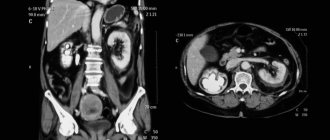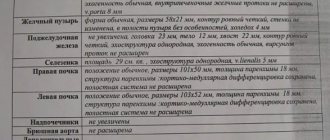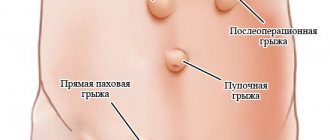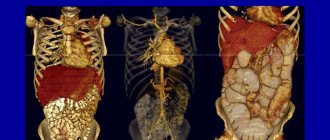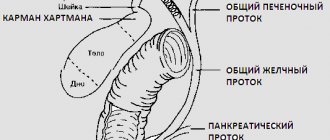What it is
Ascites (dropsy) in medicine is a condition in which a certain amount of fluid accumulates in the abdominal cavity. This condition poses a danger to the patient's health.
The disease is classified as secondary, as it develops against the background of existing pathologies. Most often it is cancer. Ascites, especially in severe cases, is accompanied by displacement of internal organs. The heart muscle, rectum, diaphragm, and blood vessels change their position.
In patients, due to the accumulation of a large volume of fluid, inguinal, diaphragmatic and umbilical hernias develop.
Ascites is observed during the formation of a malignant tumor that affects the pancreas, liver, rectum, stomach, mammary glands, and large intestine. At the same time, the severity of the secondary disease does not depend on the primary and the presence of metastatic lesions.
On this topic
- Oncogastroenterology
Feces for stomach cancer
- Natalya Gennadievna Butsyk
- December 6, 2020
In patients, in addition to symptoms of malignant lesions, there is an increase in intra-abdominal pressure, which is accompanied by pronounced symptoms. Such changes cause respiratory and heart failure.
Cancer itself is not a cause of death, but patients die due to complications. The main one is dropsy.
Etiology of occurrence
The abdominal cavity consists of two layers. The first covers the inner surface of the peritoneum, and the second is located around the organs of the cavity. Cell layers produce fluid.
Fluid content in the abdomen is normal. Provided that it is produced just enough to surround the organs of the peritoneum and prevent them from rubbing against each other. This fluid is called serous. During normal functioning of the body, it is absorbed by the epithelial layer.
When the mechanism is disrupted, lymph stagnation occurs, moisture absorption deteriorates, and fluid accumulates in the abdominal cavity. Ascites appears. Thus, the main reason for the development is a failure of the water-salt balance mechanism in the body.
The mechanism of development may differ depending on the pathology. For example, when the liver is damaged by cirrhosis, the organ produces little protein. A decrease in its level leads to plasma dilution. As a result, fluid enters the free cavity through the vascular walls, causing ascites. In addition, scar tissue forms on the diseased liver, which puts pressure on the vessels and squeezes out the plasma from them.
The danger of dropsy is the occurrence of a vicious circle, since the mechanisms of the body’s systems fail one after another.
When the veins are compressed, the fluid from them enters the lymph flow. The system cannot cope, the pressure in the nodes increases, and fluid enters the peritoneal cavity. As a result, blood circulates less and pressure drops.
The human body starts the compensation process and begins to intensively produce hormones. An increase in hormonal levels provokes an increase in pressure in the arteries. Excess moisture from the vessels again enters the stomach. The circle closes, and ascites becomes complicated.
In 90% of cases, the increase in moisture in the cavity is provoked by three factors:
- liver damage by cirrhosis;
- cancer tumor;
- cardiac dysfunction.
During the oncological process, in addition to the main factors of ascites, inflammation is also added, which provokes a tumor of the affected organ. In the latter case, the organ shell begins to produce a larger volume of fluid than it can absorb. The malignant formation also puts pressure on the lymph nodes, preventing lymph flow. Stagnation occurs, liquid rushes into free space.
External manifestation of ascites
When the complication is accompanied by insufficiency of the heart, a disruption of the cardiac and hepatic blood flow occurs. Excess plasma enters the peritoneum. The epithelial layer cannot absorb additional moisture. As a result, dropsy of the abdomen develops.
In cancerous tumors, ascites is provoked by the following factors:
- Cancer cells damage blood vessels, which leads to their clogging and lymph entering the cavity.
- Thinning of the vessels of the circulatory and lymphatic systems near the sites of metastases.
- Decreased protein levels in the blood caused by liver dysfunction.
There are reasons not related to oncology:
- Thrombosis of the veins of the liver and portal vein - leads to an increase in pressure in the vessel and disrupts blood circulation.
- Chronic kidney disease.
- Lack of nutrients during fasting.
- Disorders of the thyroid gland (insufficient production of hormones).
- Pathological conditions that provoke stagnation of lymph due to blockage of lymphatic vessels.
- Inflammation in the abdomen that is non-infectious in nature (for example, the appearance of granulomas).
Ascites can be caused by a number of chronic diseases. Eg:
- Abdominal tuberculosis.
- Various gastrointestinal diseases (pancreatitis, sarcoidosis).
- An inflammatory process in the serous membranes caused by individual independent diseases (rheumatism, uremia, benign ovarian formations).
Factors that trigger the development of hydrops in infants include:
- Congenital diseases with Rh factor conflict between the child and mother, lack of blood group compatibility. The prognosis is unfavorable - death immediately after the baby is born.
- Loss of fetal blood in the womb, which leads to congenital tissue edema.
- Congenital pathologies of the liver and gall bladder, which leads to impaired functioning of the organs.
- Lack of protein in the child’s food.
- Isolation of large amounts of protein from blood plasma.
Additionally, a number of reasons can be noted that do not provoke ascites, but increase the risk of its development as a concomitant complication. These include:
- Chronic alcoholism - even if the patient drinks a small amount of beer per day.
- The presence of hepatitis of any nature.
- Injections of narcotic substances.
- Incorrectly performed blood transfusion.
- Obesity of any stage.
- The patient has type 2 diabetes mellitus.
- High cholesterol levels in the blood.
Stages
Ascites, regardless of what causes it, is divided into three stages:
- Transitional. Mild degree, which is manifested by slight bloating. The volume of exudate is no more than 400 ml.
- Moderate. The amount of liquid increases, but not more than 5 liters. The appearance of signs of the disease is noted. Lack of therapy leads to the development of complications. Treatment is carried out with the help of diuretics.
- Tense. The volume of exudate reaches 20 liters. Resistant (stable) ascites is established. Therapy is not carried out with the help of medications, as they are not effective. A serious condition is established, disruption of the functioning of the heart and respiratory system is observed.
They are used to make a more accurate diagnosis in patients with diagnosed cancer.
Clinical picture
The presence of fluid in the peritoneum is accompanied by severe symptoms, which manifest themselves depending on the location of the primary lesion.
The main manifestation of the disease is an increase in the volume of the abdomen. This is due to the fact that fluid begins to accumulate in the abdominal cavity. Already at the 2nd degree he sags in a standing position. When a person lies down, the stomach looks like a “frog”. It manifests itself as bulging in the lateral sections.
In the early stages, heaviness, painful sensations appear, and a feeling of fullness occurs. Patients also complain of constant belching and flatulence.
On this topic
- Oncogastroenterology
First signs of rectal cancer recurrence
- Natalya Gennadievna Butsyk
- December 3, 2020
As fluid accumulates, swelling of the lower extremities develops. The symptom in the early stages is noticeable only when in an upright position.
When the patient assumes a supine position, the swelling subsides. But as the volume of exudate in the peritoneum increases during cancer, it becomes permanent.
Swelling of the soft tissues after some time spreads to the perineum, lower legs, knee joints and thighs. In men, swelling of the genital organs is observed, and inguinal hernias begin to form.
When the water in the abdominal cavity reaches a significant volume, the internal organs begin to shift. The result is pain and shortness of breath. Patients experience difficulty walking and squatting. It becomes impossible to do physical work.
All signs add up to the symptoms of cancer. The main ones include weakness, constant fatigue, nausea, vomiting, dizziness, pain in the area where the malignant tumor is located.
If such signs appear, it is important to consult a specialist in a timely manner, since dropsy with cancer can have a rapid course. Lack of medical care leads to death.
Causes
The human body, especially in the abdominal cavity, always contains small amounts of liquid. It is necessary to ensure that the internal organs do not stick together. The liquid also prevents their friction, allowing them to move freely.
The exudate that is produced in the peritoneum is not sent to other parts of the body, but is absorbed. But with certain disorders or diseases, one of which is cancer, the barrier secretory function is completely or partially lost. As a result, fluid begins to be produced in large quantities or ceases to be absorbed.
Against the background of ascites in malignant tumors, salt balance is disrupted, which leads to an increase in fluid volume. Such changes can occur for several reasons.
In cancer pathology, metastatic lesions spread throughout almost the entire body. They penetrate the blood and lymph, clog small and medium-sized vessels. As a result, stagnation occurs and plasma accumulates in the abdominal cavity.
On this topic
- Oncogastroenterology
What kind of pain occurs with rectal cancer?
- Olga Vladimirovna Khazova
- December 3, 2020
Ascites can develop after courses of chemotherapy. This is due to the negative impact of the drugs used. The disease is also caused by a disruption in the process of fluid synthesis by the leaves of the peritoneum.
In patients with cancer, there is an increase in albumin in the blood, which occurs when liver function is impaired, which leads to the occurrence of ascites.
The accumulation of fluid occurs against the background of damage to the adrenal glands and kidneys by a malignant tumor. This process is due to a change in the process of recycling metabolic products.
The causes of fluid in the abdomen are also considered to be active proliferation of blood vessels and a tight fit of the abdominal walls to the internal organs.
How to treat abdominal ascites in oncology
Treatment of ascites in oncology involves alleviating symptoms and suppressing the growth of malignant cells.
The attending physician needs to identify the stage of development of the disease:
- the mild stage involves the accumulation of fluid up to 500 ml and the patient feels bloating;
- moderate - exhibits all the symptoms described above, and liquid can accumulate up to 5 liters;
- the intense type of ascites involves the accumulation of fluid up to 20 liters and leads to serious consequences; surgical therapy provides temporary improvement.
To alleviate the condition, doctors prescribe diuretics, special dietary adjustments, surgical procedures and chemotherapy methods.
Surgical intervention
Oncology of the abdominal cavity in the final stages provokes an exacerbation of ascites and the patient undergoes a laparocentesis procedure, which is considered surgical. It allows you to pump out a large amount of liquid in a short period of time. A maximum of 5 liters can be removed, so severe cases require repeated procedures.
Laparocentesis is performed as follows: pre-treated with iodine, the skin below the navel is anesthetized with local anesthesia and a puncture is made using a trocar; if clear liquid flows, the tube is inserted into the abdominal cavity. To stop the patient's collapse, sheets are pulled over the patient's abdomen as it shrinks in size. If the procedure requires several approaches, a drainage tube is inserted and closed until the next procedure.
The danger of laparocentesis is that you can introduce an infection into the puncture, which will lead to peritonitis. Therefore, the procedure is carried out in a hospital setting.
There are contraindications to this operation: adhesions in the abdominal cavity; obvious flatulence; recent surgery to remove a ventral hernia.
Diuretics
At the early and middle stages of ascites, doctors prescribe diuretic medications that gradually remove fluid from the body. Moderation in taking diuretics is important because a sharp decrease in fluid in the body leads to intoxication; the patient should lose a maximum of 500 grams. weight per day.
The course of treatment is prescribed by the doctor individually and consists of a single drug (Diacarb) or a complex (Furosemide and Veroshpiron). To maintain water and electrolyte balance, patients are prescribed additional medicine containing potassium (Panangin).
The use of folk remedies is considered ineffective, but sometimes doctors allow herbal infusions to be taken as an addition to the main treatment.
Diuretic plants include: milk thistle, thyme, oregano, sage, lemon balm, motherwort, St. John's wort. These plants can be combined, the main thing is that their use should be agreed with a doctor and not interfere with taking basic medications.
Diet food
Organization of nutrition helps to reduce fluid. Therefore, doctors treat ascites in oncology with a salt-free diet. Spicy, fatty and sweet foods, spices and carbonated drinks are also excluded from the diet of patients. The patient must accurately calculate the amount of fluid consumed and excreted.
To prevent water imbalance, the patient should consume the following foods in the diet: boiled fish and meat; compotes with dried apricots and raisins; baked potato; asparagus, spinach, green peas; oatmeal; carrot.
Detailed nutrition should be discussed with your doctor to exclude foods that are prohibited for the underlying disease.
Prevention
Taking care of your health in advance will reduce the likelihood of developing ascites. A person should be alert to the appearance of new symptoms. If you have kidney, heart or liver diseases, you need to undergo regular tests and preventive examinations. Quitting smoking and alcohol, as well as taking regular walks, will strengthen your body.
The presence of cancer should force you to reconsider your diet and attitude towards bad habits. It is important to visit your doctor regularly and monitor your weight. These measures will allow the disease to be detected at an early stage, which will improve the prognosis.
Diagnostic methods
Abdominal ascites in oncology is often the main symptom of cancer. The presence of a malignant lesion is established during diagnostic measures.
An increase in the amount of fluid in the peritoneum does not cause difficulties in making a diagnosis, especially in the second stage. This is due to the presence of a specific symptom in the form of an enlarged abdomen. But to determine the extent, characteristics of the course and the causes of its occurrence, a comprehensive study is required.
Palpation examination
The method is aimed at determining the presence of exudate and its distribution. But it is possible to detect ascites by palpation only if at least one and a half liters of fluid have accumulated in the abdominal cavity.
The specialist also determines the existing complaints, the time of their occurrence, and accompanying symptoms.
Ultrasound
Ultrasound is the main way to diagnose ascites. Thanks to technology, the doctor can determine the degree of change in internal organs and their displacement.
The technique allows you to quickly obtain results and establish a preliminary diagnosis. Also, during the study, the presence of a neoplasm affecting internal organs is often revealed.
Laparocentesis
The procedure involves removing accumulated fluid. It is used not only for medicinal purposes, but also for conducting cytological examination of the obtained samples.
In some cases, when a tumor is detected by ultrasound, but a cancer diagnosis has not previously been established, a biopsy of tumor tissue is prescribed. It allows you to determine the presence of pathologically altered cells and identify the exact cause of fluid accumulation in the abdominal cavity.
Treatment
Therapy for dropsy is carried out depending on the degree of development of the disease, the characteristics of its course, the age of the patient and the presence of concomitant diseases.
Chemotherapy
Chemotherapy drugs in the treatment of ascites are used only if they help alleviate the course of the disease.
The use of the technique will also reduce the size of the malignant neoplasm and prevent the spread of metastatic lesions.
Drug therapy
For the first or second degree of ascites, the use of medications with a diuretic effect is recommended. In addition, experts recommend drinking as much water as possible if you have cancer. This is due to the fact that the fluid removes the decay products of the tumor from the body. As a result, the symptoms of intoxication become less pronounced.
But if there is an accumulation of exudate in the abdominal cavity, you should not drink a lot of water. The possibility of using medications is determined by the doctor, who selects the drug, sets the dosage and duration of administration.
For ascites, which is a complication of cancer, the most effective are Veroshpiron, Diacarb, and Furosemide. They are used in various combinations.
On this topic
- Oncogastroenterology
How does colon cancer hurt?
- Olga Vladimirovna Khazova
- December 3, 2020
"Veroshpiron" belongs to the group of drugs that allow you to preserve potassium in the body, since it contains the adrenal hormone. It is he who gets rid of excess fluid. The medicine begins to act 2-5 days after the start of administration. Its effect continues for three days after the end of treatment.
"Diacarb" is a targeted remedy. It is used to prevent the development of cerebral edema, but is ineffective in removing excess fluid. The activity of the drug is noticeable already on day 3. The mechanism of action is to block enzymes that make up the tissues of the brain and kidneys.
Furosmid belongs to the group of diuretics. The drug blocks the process of reabsorption of fluid. But its disadvantage is its ability to remove potassium from the body.
Surgical methods
Abdominal ascites due to cancer in severe cases requires surgical intervention. The procedure for removing exudate is carried out in several ways.
Laparocentesis
Abdominal puncture is considered a full-fledged surgical intervention. The technique is carried out using a puncture.
The patient should sit on a chair. The puncture site is treated with novocaine to reduce pain.
Using a special instrument, a puncture is made in the abdominal wall. Then a tube is inserted, pumping out the accumulated fluid. In one procedure, up to 10 liters of exudate can be removed. To prevent collapse, the abdomen is covered with a sheet.
On this topic
- Oncogastroenterology
Does ultrasound show colon cancer?
- Olga Vladimirovna Khazova
- December 3, 2020
But it is not always possible to remove all the fluid in the abdominal cavity in one session. If it is necessary to repeat the procedure, a drainage tube is inserted into the puncture site. The puncture is performed a few days later.
The main condition is sterility, since there is a high risk of infection through a puncture. As a result, a purulent process begins.
Contraindications to puncture are removal of a hernia and the recovery period after surgery, severe flatulence. Laparocentesis cannot be performed if there are adhesions in the abdominal cavity.
Peritoneovenous shunting
The operation is performed by connecting the superior vena cava to the peritoneum using a tube. When breathing, fluid is directed into the venous channel.
Surgical intervention is complex and can only be performed in the absence of thrombosis and other contraindications.
Omentohepatophrenopexy
The technique is aimed at removing the fused abdominal wall and omentum. It is sutured to the liver or diaphragm.
The procedure is prescribed when the location of the omentum does not allow puncture.
Diet
For abdominal dropsy, patients must follow a special diet. It is aimed at restoring metabolic processes and accelerating the process of fluid removal.
A balanced diet helps maintain the vitality of the body. Experts recommend avoiding salty, sweet, fatty and smoked foods. It is also not recommended to consume acidic foods, as they overload the liver.
To maintain the digestion process, it is important to eat cottage cheese, drink milk, fermented baked milk, and yogurt. Dried fruits, vegetables and gray cereals are useful, as they contain a sufficient amount of potassium.
The number of meals per day should be at least four, the portions are small, since overeating is prohibited.
Abdominal ascites in oncology: treatment
First of all, it should be noted that treatment of ascites in oncology should be carried out together with therapy of the underlying disease. In this case, it is extremely important to begin eliminating excess fluid in the first two weeks from the moment it accumulates. Otherwise, numerous and severe complications may develop. The doctor selects a special diet for the patient in order to minimize the production of excess fluid, as well as reduce intra-abdominal pressure. Specialists at the Yusupov Clinic approach each person’s problem individually. All stages of the upcoming therapy are discussed with the patient. Oncologists apply treatment standards from leading world countries.
Read also: Anti-Alcohol Day 2018
Chemotherapy for ascites caused by oncology is prescribed only for intestinal cancer. In the case of cancer of the uterus, ovaries, and stomach, taking chemotherapy drugs does not have the desired therapeutic effect.
Laparocentesis is prescribed in cases where taking diuretics does not lead to a positive result. The procedure is also indicated for resistant ascites.
Laparocentesis is carried out in several stages using local anesthesia:
- the patient is in a sitting position, the doctor treats the subsequent puncture site with an antiseptic and administers painkillers;
- An incision is made in the abdominal wall along the linea alba at a distance of 2-3 centimeters below the navel;
- The puncture itself is performed using a trocar using rotational movements. A special flexible tube is attached to the trocar, through which excess fluid is removed from the body. The fluid is pumped out quite slowly, and the doctor constantly monitors the patient’s condition. As the exudate is removed, the nurse tightens the patient's abdomen with a sheet to slowly reduce the pressure in the abdominal cavity;
- After the fluid is pumped out, a sterile bandage is applied to the wound.
Using laparocentesis, up to 10 liters of fluid can be removed from the patient’s body. In this case, it may be necessary to administer albumin and other drugs to prevent the development of renal failure.
If necessary, temporary catheters can be installed in the abdominal cavity, through which excess fluid will gradually be removed. It should be noted that the use of catheters can lead to a decrease in blood pressure and the formation of adhesions.
There are also contraindications to laparocentesis. Among them:
- pronounced flatulence;
- adhesive disease of the abdominal organs;
- stage of recovery after surgery on a ventral hernia.
Diuretics are prescribed to patients with developing ascites in cancer over a long course. Such drugs as Furosemide, Diacarb and Veroshpiron are effective.
When taking diuretics, medications containing potassium must also be prescribed. Otherwise, there is a high probability of developing disturbances in water and electrolyte metabolism.
Dietary nutrition, first of all, means reducing the amount of salt consumed, which retains fluid in the body. It is also important to limit the amount of fluid you drink. It is recommended to include more foods containing potassium in your diet.
Radiation therapy for cancer with ascites is carried out in the presence of metastases to the liver.
Diagnosis and treatment at Yusupov’s clinic are carried out using modern medical technologies, which makes it possible to increase the survival rate of patients several times. If desired, in our clinic you can undergo a rehabilitation course under the strict supervision of doctors.
Possible complications and consequences
Lack of treatment for ascites caused by cancer leads to rapid deterioration of the condition. Against the background of an increase in the amount of fluid in the abdominal cavity, bacterial peritonitis, intestinal obstruction, cardiac and respiratory failure develop.
Patients experience the formation of hernias in the groin, navel and abdominal line. Increases the risk of pinching. Also, bloating as a result of ascites causes bleeding and prolapse of the rectum through the anus.
Exudate begins to accumulate between the pleural layers, which leads to acute respiratory failure.
Complications with ascites develop suddenly and lead to a significant deterioration of the condition. They most often cause death. This is why treatment should not be delayed.
Forecast
With ascites, which develops against the background of a malignant neoplasm, the prognosis is determined depending on the degree of cancer and dropsy. But most often, more than half of patients die within 3 years from the onset of the disease.
The rest of the patients have a rapidly declining quality of life. They are unable to conduct full-fledged everyday and social activities.
There are no statistics on how many people live with ascites and cancer. This is due to the fact that diseases reduce the duration and quality of life several times.
Why does cancer cause fluid to accumulate in the abdomen?
In liver cancer, the causes of ascites are the same as in cirrhosis (in fact, liver cancer in most cases develops against the background of cirrhosis): impaired blood outflow, increased pressure and congestion in the veins, impaired albumin synthesis and a decrease in oncotic pressure of the blood.
In case of malignant tumors of other organs (stomach, intestines, uterus, ovaries), ascites occurs due to damage to peritoneal cancer cells. Because of this, fluid absorption is impaired. If tumor cells invade the lymph nodes, ascites may occur due to impaired lymph flow.
